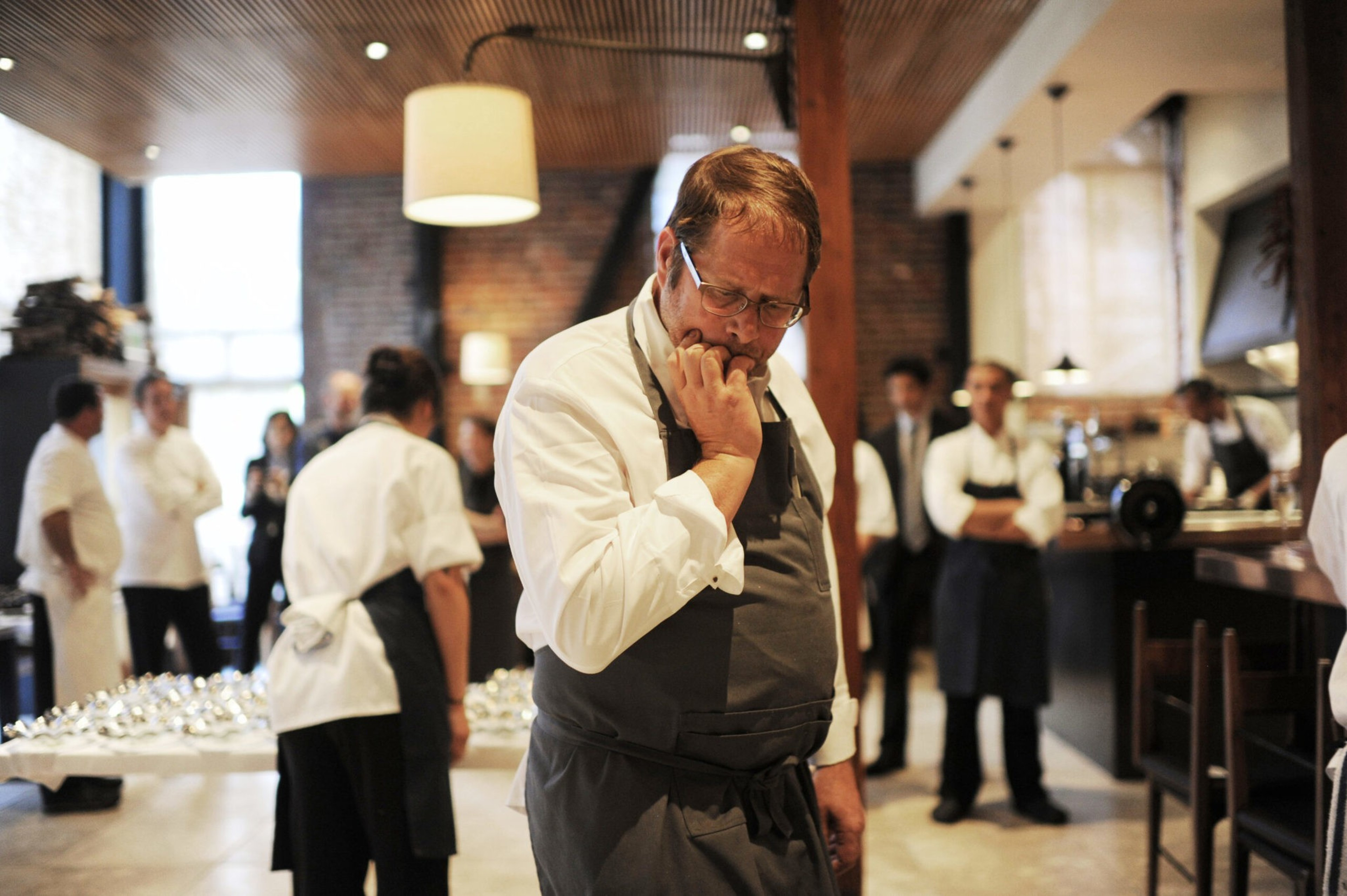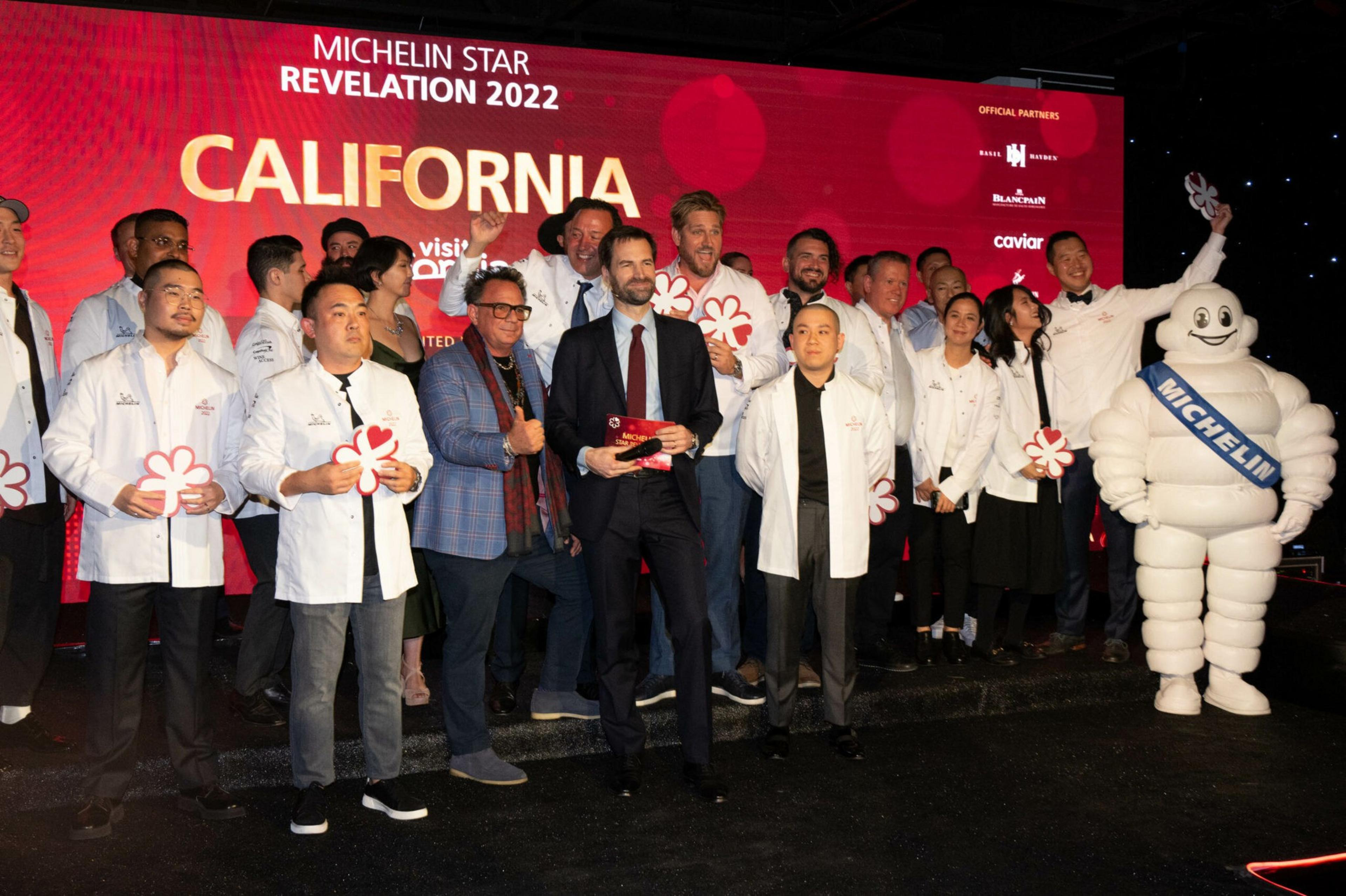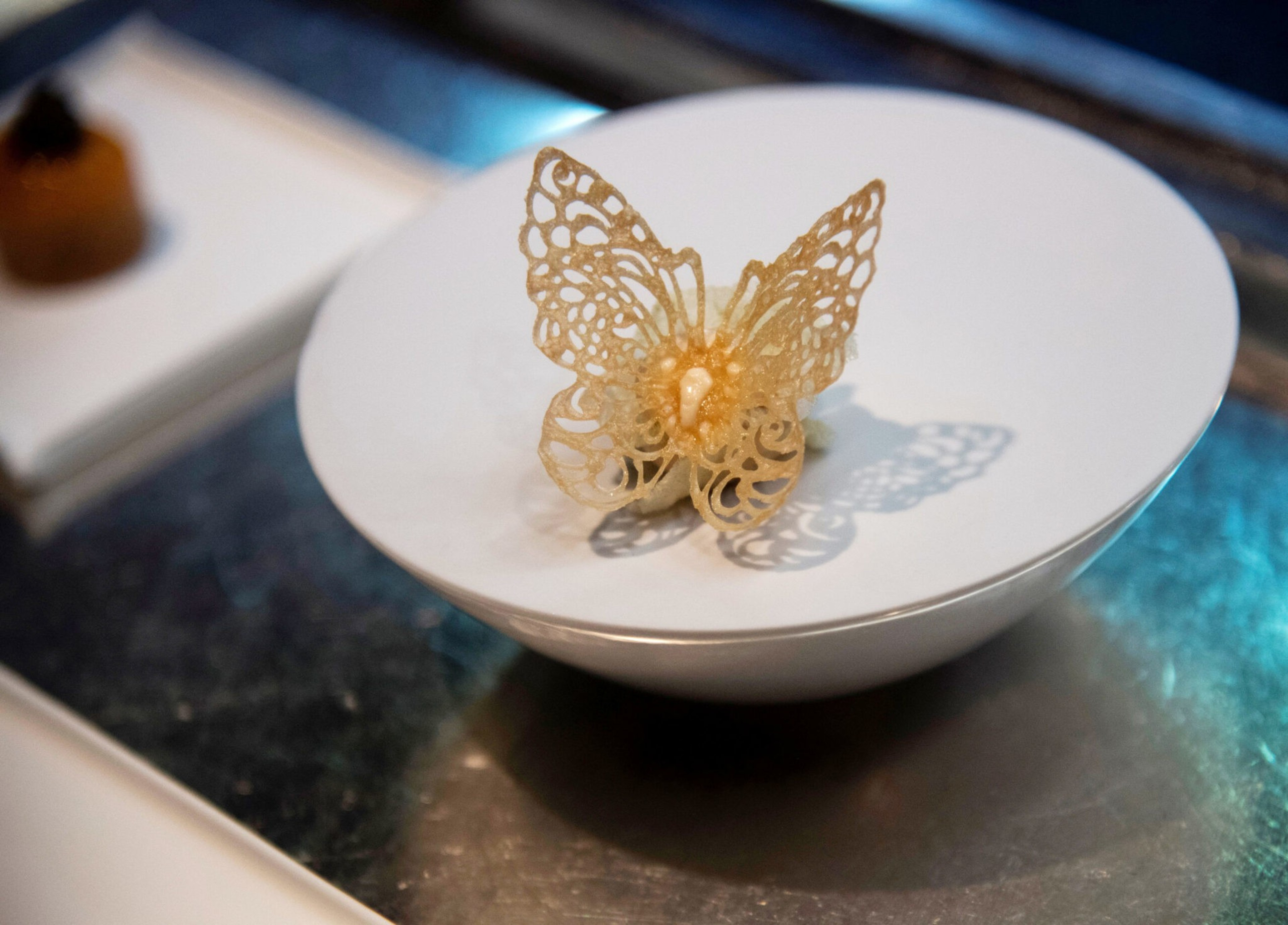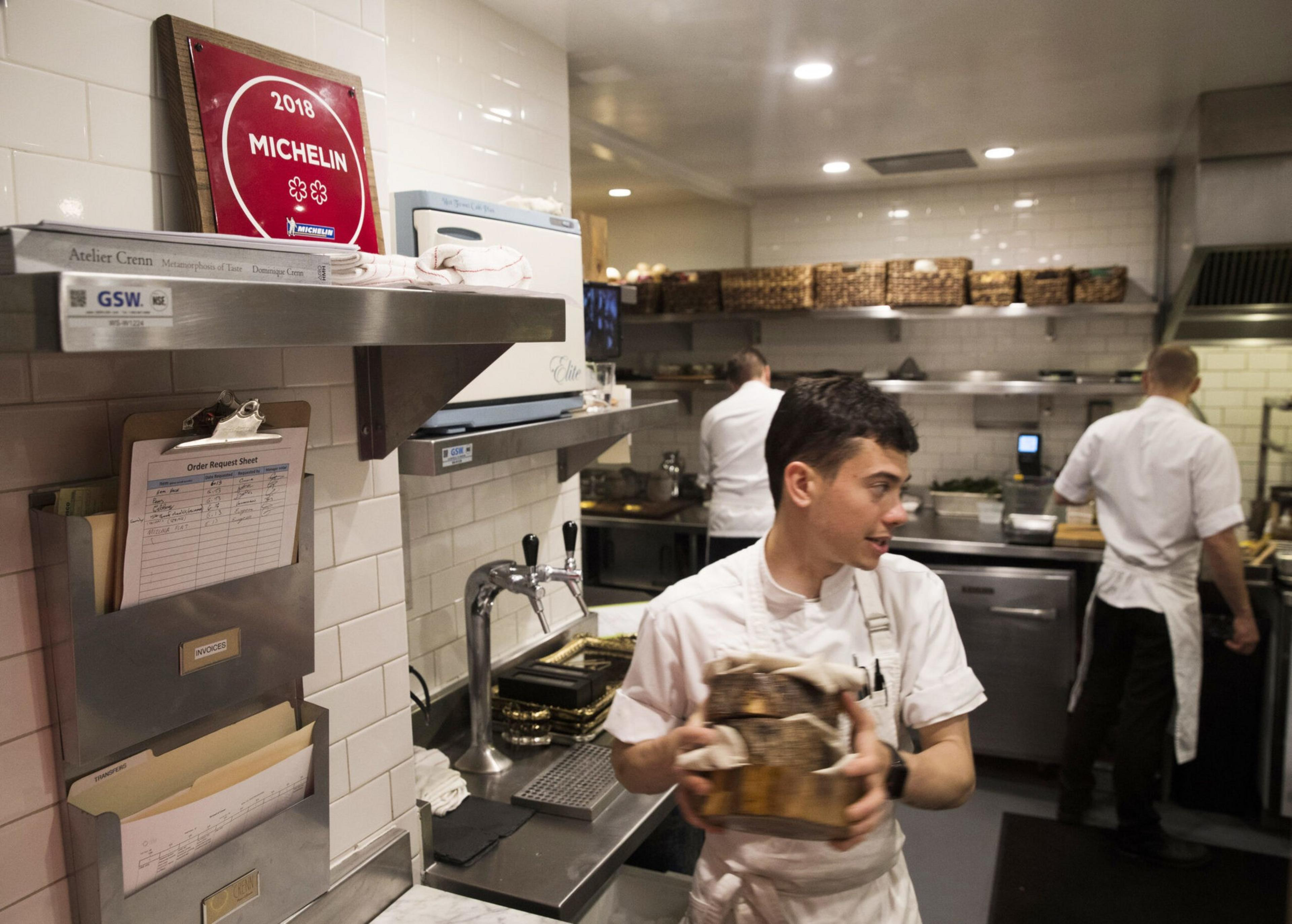When the owner of the “world’s best restaurant (opens in new tab),” Noma in Copenhagen, announced in January that it would close as a full-time business next year, the media pressure-cooked a feast of think pieces (opens in new tab) about what the high-profile shuttering means for the rest of the restaurant world. Among other questions, people asked, is fine dining dead?
Not yet, evidently. It doesn’t take much scrolling to realize that the food world is still obsessed with awards (opens in new tab). Michelin, the French tire company with a jolly mascot who looks like he hangs with the Kool-Aid Man, remains the painstaking gold standard.

But the past three years have left restaurant owners and workers questioning the high costs of being an award winner, especially in the Bay Area. Covid reinforced what many of us already knew: While it’s a culinary capital and one of the most expensive metros (opens in new tab) in the world, the Bay Area isn’t always hospitable to those working in the hospitality industry.
Sourcing high-quality ingredients and keeping the lights on at an award-winning establishment is made even more challenging in such a costly area. And, as in any other city, the pandemic and its impacts destabilized our bars and restaurants, laying bare the inadequate pay and general unsustainability within the fine dining industry.
The last past months alone provide us with plenty of object lessons. Last summer, Chef Aaron London closed his wildly popular Michelin-starred Mission District eatery, AL’s Place (opens in new tab), pledging to spend more time with his partner and daughter while he figures out his next move.
At the end of December, Manresa, a culinary gem in Los Gatos with a coveted three Michelin stars to its name, shuttered after chef David Kinch decided to focus on other projects.
Then, when the news about Noma broke in January, Vivian Howard, who recently closed her North Carolina flagship Chef & the Farmer, published an essay in the New York Times lambasting both Noma and what it represents (opens in new tab) to aspiring chefs. Referencing reporting by The Atlantic that revealed the Danish restaurant’s reliance on free labor, she called Noma a “work camp” and a bastion of “extremist fine-dining.”

As Howard points out, this is nothing new. Plenty of award-winning chefs have shifted focus away from their fine dining flagships—or scrapped them entirely—to launch fast-casual concepts that they can replicate like amoebae in any random shopping mall or airport terminal from sea to shining sea. Emeril Lagasse and Wolfgang Puck are two celebrity chefs-turned-international brands that come to mind.
While Noma’s closure impacts a kitchen half a world away from the Bay Area, the trials and tribulations that come with Michelin’s lofty standards reveal deeper problems within our own hospitality industry. The Standard asked four Bay Area chefs to weigh in on the future of the Michelin model, and there weren’t any simple answers.
An Anxiety-Inducing Launch Pad
Last year, restaurateur Hirohiko Sato said he was thrilled to find out that his new nine-seat Kappo-style bar in Japantown, Yuji—named for executive chef Yuji Yamauchi—had made it into the Michelin Guide. Being featured in the Michelin Guide is not the same as earning a star, but for many new restaurants, it is a carrot that the tire company dangles with the uncertain promise that the more prestigious star could soon follow later in the year.
Yuji never did get that star. However, citing examples like Iron Chef Masaharu Morimoto, Sato holds out hope that he might one day capture one. If that happens, he knows it will catapult Yamauchi to celebrity chefdom—and do wonders for his career as well.
“Then someday we’d open another location in either New York or LA. That’s our goal,” Sato said.
If Yuji is a Hollywood hopeful on the road to a Michelin star, chef David Costa’s Adega is a cautionary tale. Adega is the only restaurant in San Jose with a Michelin star. The high-end Portuguese eatery received its star in 2016, lost it in 2018 and regained it in 2021. Unsurprisingly, Costa told The Standard that Michelin is more crucial to his kitchen than ever.
“It’s very important to my entire team in the restaurant and so important to us as a business,” Costa said.

Presumably, Adega’s star fell after a lackluster anonymous inspection, and Costa said that thought still rattles him. “I have no idea about the visits,” he said. “We don’t see the person that does the inspections. It’s good, but it’s bad.”
As a result, Costa said he’s focused on consistency. “You have a lot of pressure,” he said. “So everything is the same. It’s better for maintaining the quality.”
Overrated & Untenable
Jim Stump says he’s the first to point out the ways in which Michelin erodes the creativity of chefs. The 60-year-old restaurateur owns six spots in the South Bay, including The Table, a contemporary American eatery San Jose’s Willow Glen neighborhood. In January, he opened an eponymous taproom at the San Jose airport.
After spending most of his life in kitchens, Stump said he has no interest in chasing after a Michelin star. He told The Standard that becoming a Michelin-starred chef takes a certain level of myopia.
“Agenda is a great word,” Stump said. “Michelin is the benchmark of quality. So chefs want that because basically that’s what you get as a chef. As a young chef at least, you don’t get money.”
When he was coming up as a young chef, Stump said he learned the hard way how to carve out his own definition of success. “I wanted the awards,” Stump said. “I worked in a restaurant where we were shooting to be the very best and we failed. And I was taught that harsh lesson in the business.”
Stump said he’s also observed that because each additional Michelin star is more difficult to attain, the star game can become addictive. “If you get one, you want two, you want three. Ultimately, if you’re a cook that wants to work in a three-star environment, you say, ‘I want to be the greatest in the world,’ and that means you want to suffer and sacrifice no matter what.”

Because it only takes one negative review from one of Michelin’s inspectors—who, rumor has it (opens in new tab), anonymously visits starred restaurants every 18 months or so—chefs must keep their dishes consistent, even uniform, thereby flattening a chef’s creative freedoms.
“There’s a certain stillness that comes to the menu,” Stump said. “You start talking on that level, it’s kind of boring at some point.”
Still, Stump said there are Michelin model restaurants that manage to balance quality standards with the magic of creating a space where diners can feel as though they belong. He cites Cyrus—a Michelin-lauded wine country gem in Healdsburg helmed by Chef Douglas Keane—as an example.
“You go to his dining room, and you feel welcome and warm, and it’s like, ‘Whoa, this guy’s got magic to do it at that level.’”
Stump is also frank about the elephant in the room: Given the high cost of living in the Bay Area, the Michelin model may be particularly untenable here.
“These last three years made us all rethink everything,” he said. “Some chefs have left the kitchen in the Bay Area. It’s just astronomically expensive to live here […] and Michelin stars don’t pay bills.”

A Worthy & Sustainable Goal
Harrison Cheney moved to San Francisco perhaps in part to test that theory. He’s the new executive chef at Sons & Daughters in Nob Hill. Before accepting the job there, Cheney worked at a Michelin-minted—and now permanently closed—restaurant in Stockholm called Gastrologik. Teague Moriarty, the longtime chef and owner of Sons & Daughters, enticed Cheney to cross the Atlantic and take the reins at his 16-seat seasonally focused eatery.
Cheney’s culinary ambitions predate puberty. The British chef told The Standard he decided he wanted to be a chef at the age of 9, inspired in part by his mother and the celebrity chefs featured on the cooking shows she watched at home. By 17, he was working in a kitchen in the U.K. when it won its first Michelin star.
As Cheney told The Standard, he still believes Michelin is and will continue to be the gold standard of fine dining. “With that recognition, you get a lot more bookings, and then more recognition,” he said. “Michelin reminds us of our goals […] so I certainly think it’s still very relevant.”

Reflecting on all of the overtime his team clocked at Gastrologik once they had set their sights on a second Michelin star, he said the pressure was intense. “It was like someone watching over your shoulder, like, ‘Is this good enough? Is this good enough?’ and eventually, we got our second star, and that was it. It was almost a confirmation that everything we’re doing was a step in the right direction.”
Back when he started in fine-dining kitchens, Cheney said he was easily working 19-hour days and sleeping around three hours most nights. Now that he’s leading his own kitchen, he said it’s about balancing Michelin-worthy standards and a healthy working life.
“First and foremost, I really do believe that it can be sustainable,” Cheney said. “But I think that is up to us. Those are decisions for people in positions like mine.”
While the Michelin model has propelled chefs to celebrity status, Cheney said he wants to emphasize that it’s a collective effort. “That’s what makes a Michelin star restaurant, because you leave any of those cooks out and it doesn’t run the same way. You need a very efficient model to keep a Michelin star running.”
Before Cheney joined the kitchen at Sons & Daughters, his predecessor was an outspoken advocate of fair working conditions, offering no-cost healthcare and sharing profits with his employees. Cheney said he plans to carry on those values, though he’s realistic about what it takes to work in an award-winning kitchen.

“We’re still working 11 hours,” he admitted. “But realistically, I don’t know if there’s an answer to stop that. If you want to work in the best restaurants, you need to make sacrifices.
“The most important thing to me is to have a busy restaurant and a happy staff,” Cheney added. “With that, I truly believe the accolades do come.”
